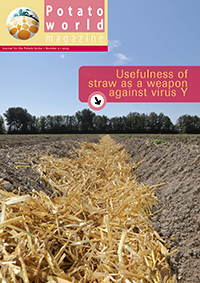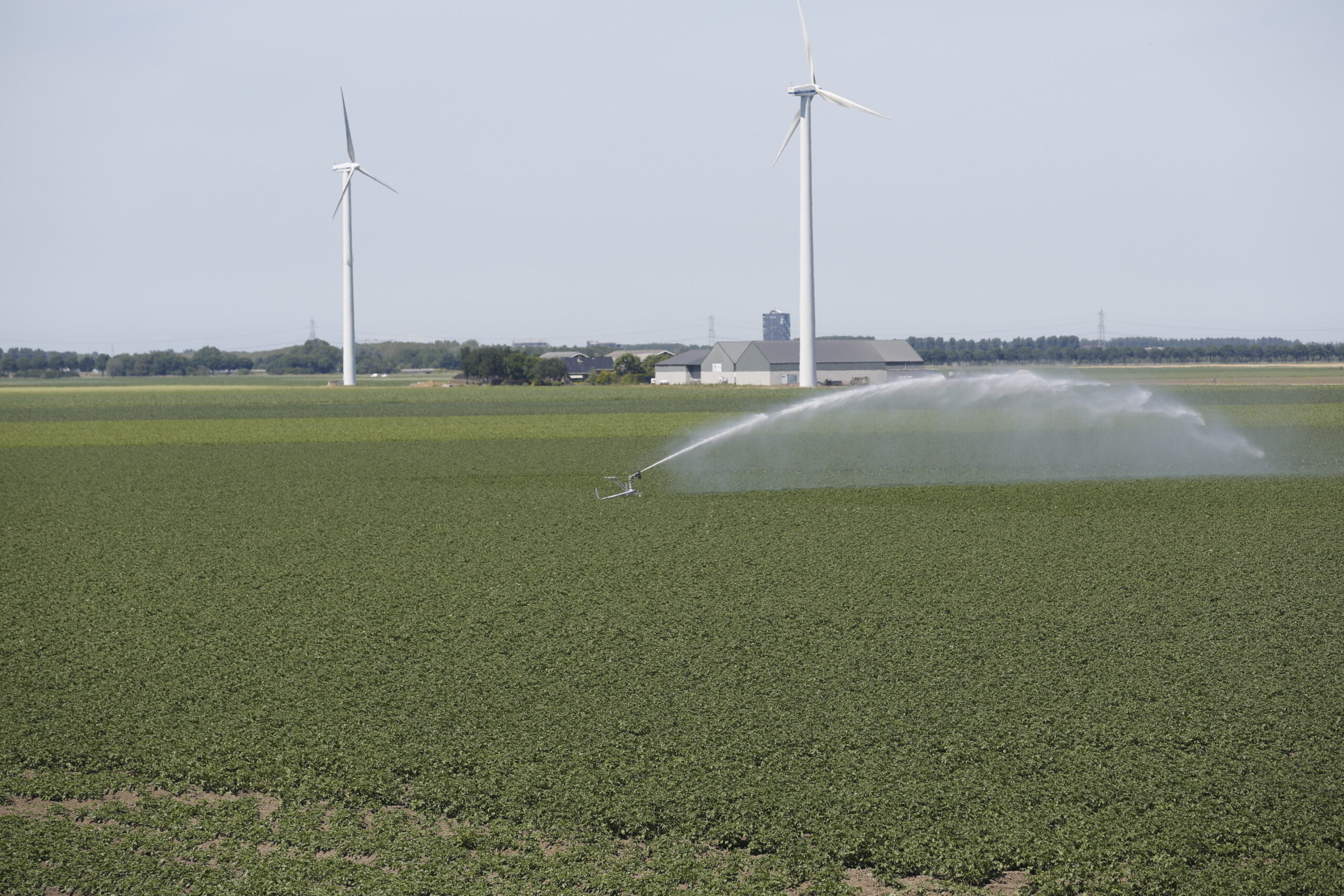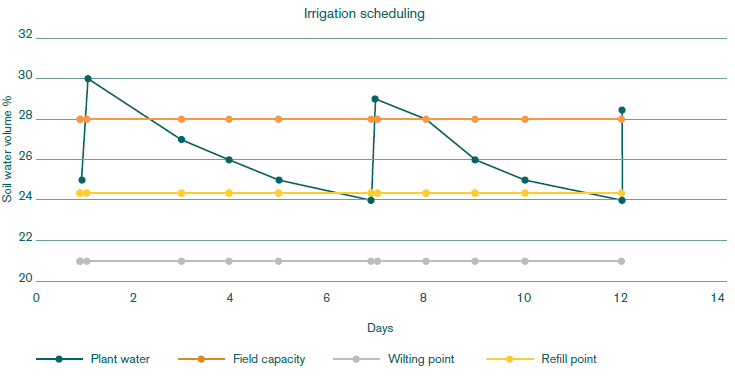Already a subscriber? Activate your premium account

Potatoworld Magazine

Globally most potato cropping systems depend on irrigation for optimal yields. Many growers plan dose and time of irrigation from experience only, others apply a decision support system. Both approaches include knowledge about the amount of water in the topsoil: its rooting depth and the number of millimeters of water the plant is able to extract from it.
The water holding capacity of the soil is expressed as volume percentage or cm of water present per meter depth. This quantity depends on the granular composition, its structure (degree of aeration) and organic matter concentration of the soil. Not all water present in the soil is available for the crop. If the suction force of the soil exceeds 70 centibars, potato plant growth slows down. The amount of water available between 0 and 70 centibars depending on soil type varies between 8 and 22 percent. Soil labs are able to determine this value for each field. After planting the soil evaporates water and after emergence the crop transpires water. After full canopy cover, evaporation from the soil is negligible and all water loss from a field is due to crop transpiration.
Daily transpiration of a crop that fully covers the soil is equivalent to an open pan evaporation. When the crop covers 50 percent of the soil, evapotranspiration is more than 50 percent of open pan evaporation as evaporation of the soil is added to the transpiration of the crop. In North Western Europe, on a clear warm day total crop evapotranspiration maximally amounts to 6 mm per day, less on cloudy cool days. In the subtropics in summer, it exceeds well over 10 mm per day. Meteorological services report these data of the previous day. In principle, growers now can decide when to irrigate. After all, once the plants have taken up soil water and its status reaches the volume percentage at 70 centibars, soil water has to be replenished to the volume percentage at field capacity, i.e. zero centibar. The irrigation frequency follows from the meteorological service data of daily evapotranspiration.
In most countries with advanced potato cropping where irrigation of potato crops is common, there are service providers that assist growers in irrigation scheduling. Prior to planting the company collects data on rooting depth and water holding capacity of the field. In the provider’s web based system, during the growing season, the grower fills in the percentage of crop cover and the last date of irrigation and the amount of water applied in mm. The provider is also able to give an indication of the average benefit in t/ha of a next irrigation with its statistical spread, based on long-term past weather. Some service providers correct for local conditions by monitoring the actual water condition of the soil with the aid of sensors based on soil electric conductivity, tensiometers, neutron probes or gypsum blocks. In desert-like regions, or in places facing absence of rain during the growing season such as Idaho, Israel, Inner Mongolia and North India, decision support is less of an issue because there is not much variation in water withdrawal and growers usually irrigate fixed amounts at fixed intervals.
Many growers all over the world schedule their irrigation based on experience: they look at past and expected weather, at the crop and the soil. On the other hand they follow convenience, they move for instance the irrigation equipment to another field every day and irrigate for a fixed period, or switch on the pivot every other day. There are also growers, especially in high tech regions that use a decision support system based on water extraction by the potato crop that fully covers the soil. This is assumed to be close to the ETP as measured with an open pan. When the soil is less than 100 percent covered by the canopy, they correct for soil water evaporation that is added to the partial ETP. The rooting depth is taken into consideration as well as the soil type specific moisture volumes at field capacity and permanent wilting point.
Some methods include the useable reserve of water in the soil expressed as mm water per cm soil depth that depends on both the percentages clay (particles smaller than 2 μm) and silt (particles of sizes between 2 and 50 μm) in the soil. The available water varies from 0,7 mm/cm in sandy soils low in clay and silt and 1.9 mm/cm in clay soils with over 60 percent clay or over 60 percent silt. The weather data either come from a small meteorological station in the field or from a nearby public or commercial weather institute. Crop stages are sometimes taken into account. These are firstly the four stages of crop development: emergence, tuber initiation, canopy closure and the onset of crop senescence. Next the DSS applies a set of dose-frequency irrigation rules that normally cover with 80 percent certainty the crop need coupled to tensiometer readings. These data suggest to the grower when to start irrigating and when and how to deviate from the long-term routine. Especially early irrigation around tuber initiation results in a higher number of tubers than without.

Events
©2015 - 2024 Potatoworld | Webdesign and realisation COMMPRO